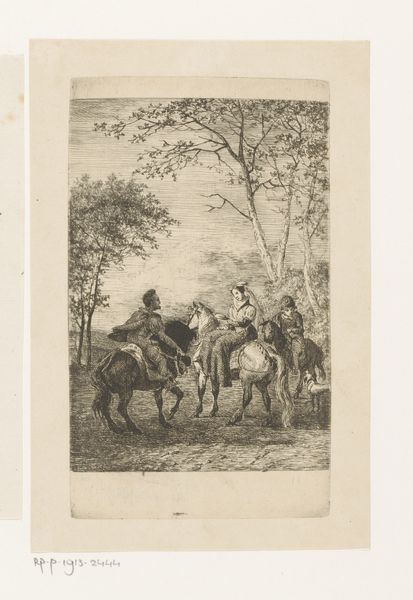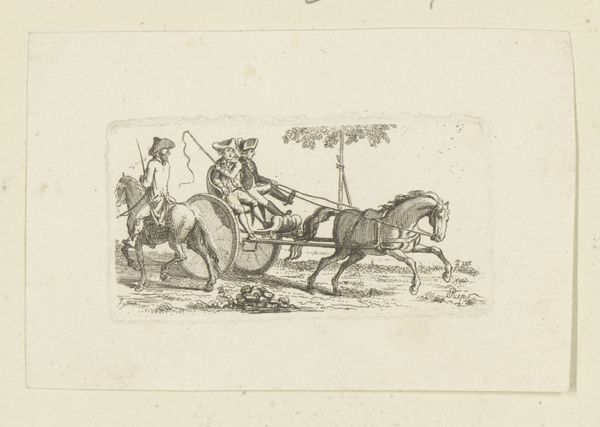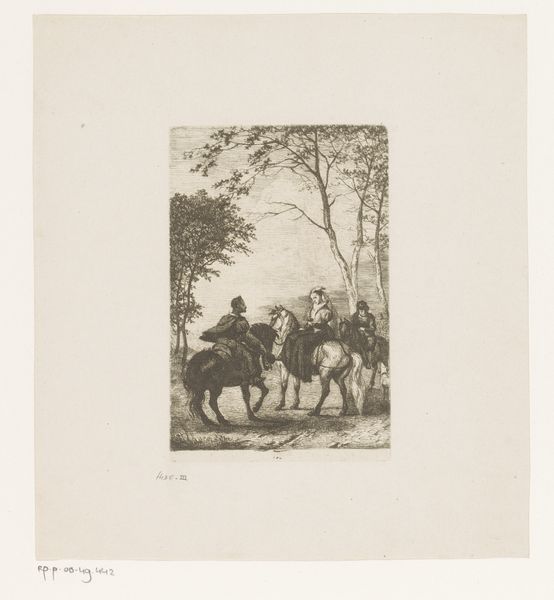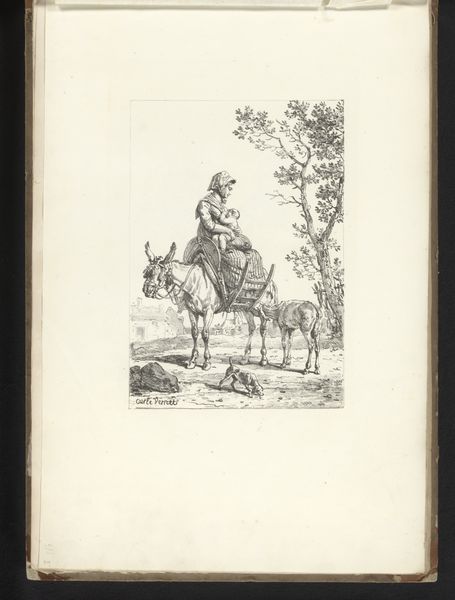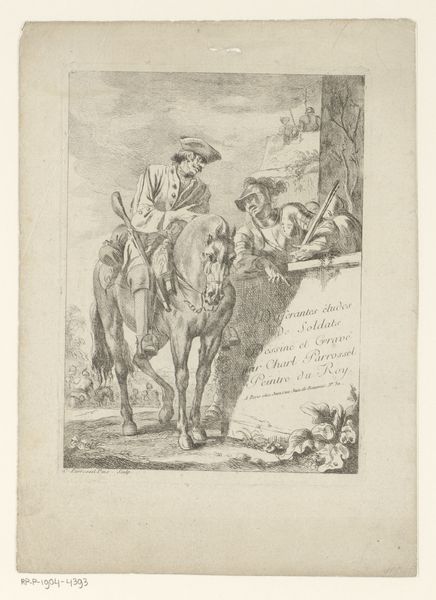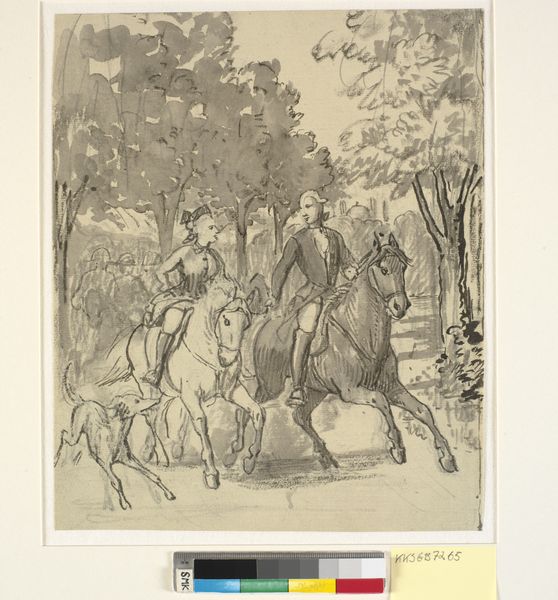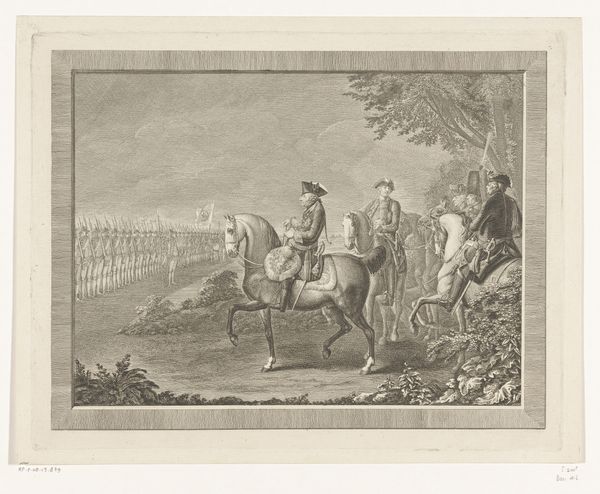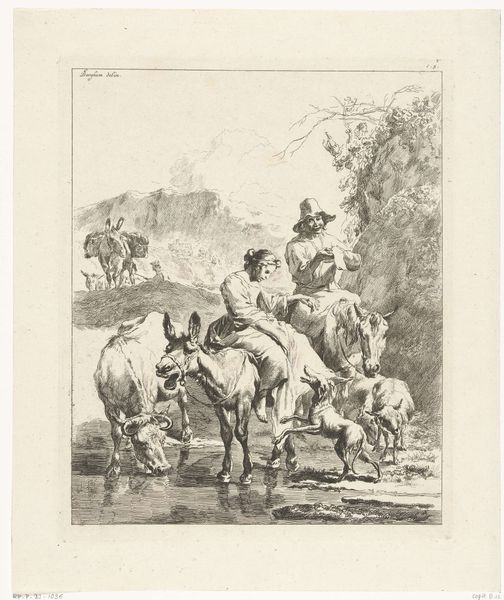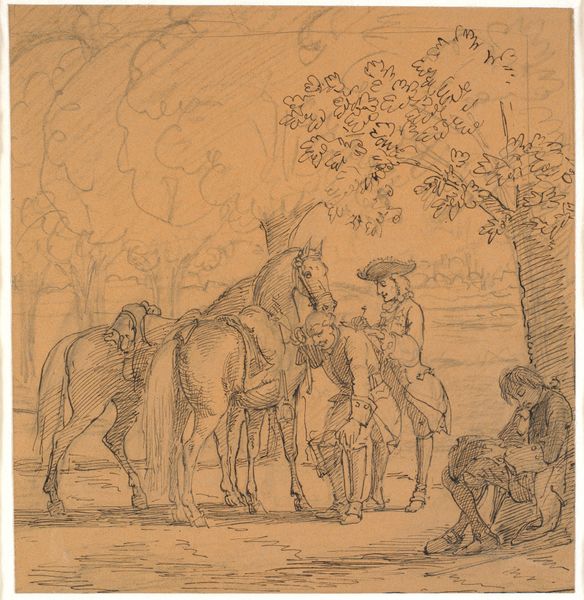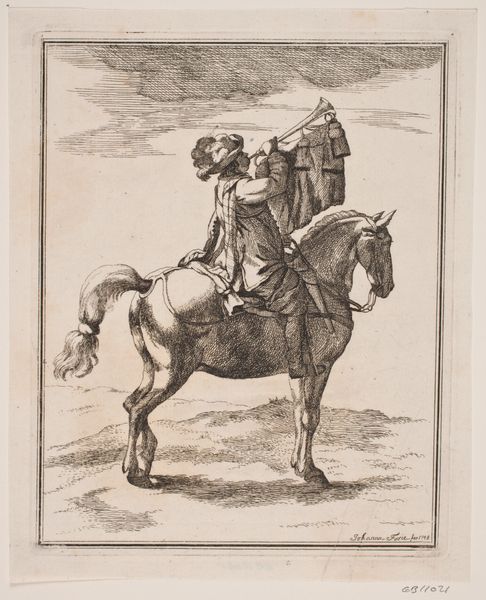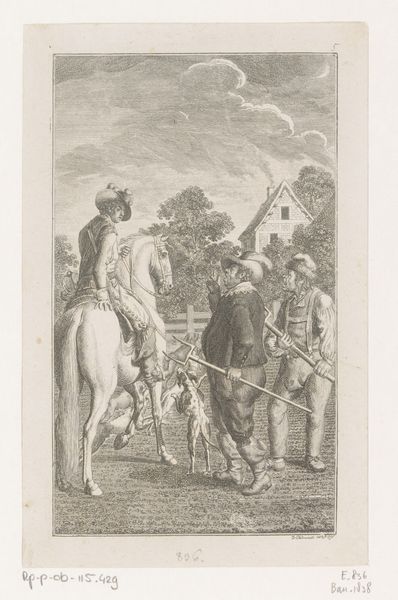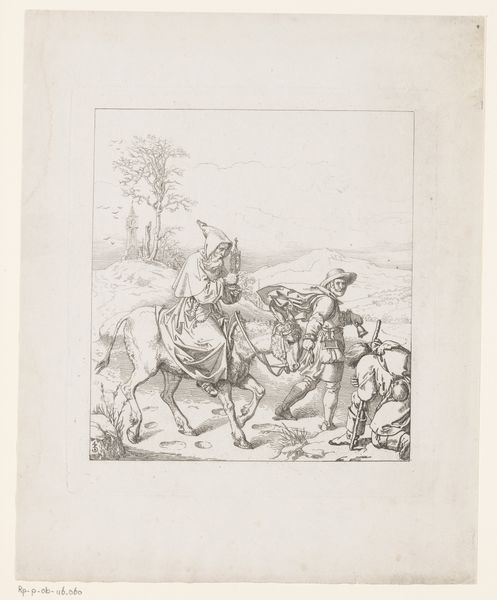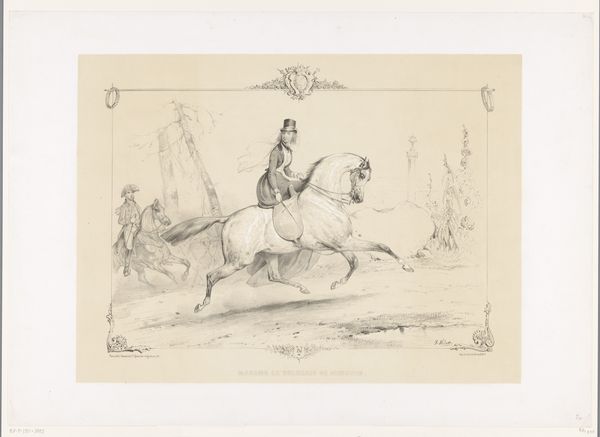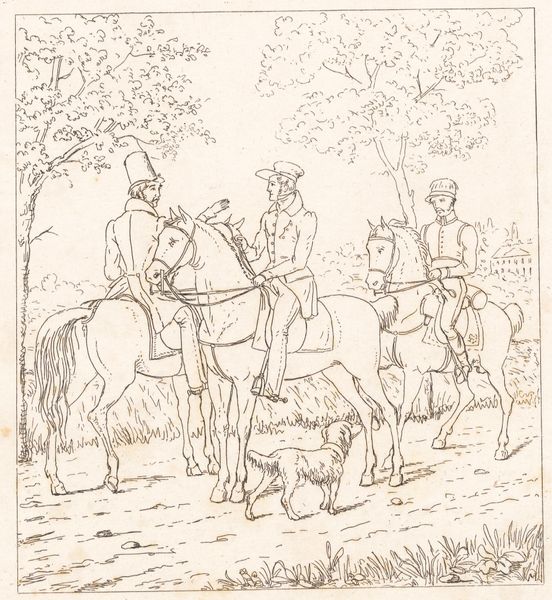
print, etching
# print
#
etching
#
landscape
#
romanticism
#
genre-painting
Dimensions: height 143 mm, width 95 mm
Copyright: Rijks Museum: Open Domain
Curator: Here we have "Ontmoeting in het bos," which translates to "Meeting in the Forest," an etching made sometime between 1799 and 1874, attributed to Hendrik Jozef Franciscus van der Poorten. It is currently held in the collection of the Rijksmuseum. Editor: My first impression is one of faded elegance. The limited tonal range of the etching emphasizes the intricate layering of the figures. You can almost feel the grit under their horses hooves and the dry quality of the air. Curator: Indeed. It exemplifies Romanticism with its focus on landscape and hints of narrative, fitting into a larger historical trend in the rise of leisure activities for the upper classes and the role the fine arts played in signifying those experiences. Editor: Right, but how was this image produced and disseminated? The fine lines created by the etching process were key. And while this falls under 'high art' today, it's important to see how printmaking served as both art object and reproducible commodity, cheapened by each subsequent printing. How did this feed its cultural impact? Curator: Excellent point. As a print, it's participation in visual culture was inherently democratizing. This made landscape views and depictions of leisurely encounters available beyond the realm of oil paintings, even if it subtly re-affirmed class structures by virtue of who it depicted in those leisurely roles. Editor: Precisely. The textures that Van der Poorten achieves - the scratchiness of the drypoint on the etched plate really draws you in to think about the hand labor involved in its making. Curator: Yes, the work invites that intimate viewing, fostering both a romantic vision of the landscape and reinforcing societal structure. A fine example of how art is imbricated in power. Editor: Absolutely. Looking at it materially enriches its understanding by opening up discussion about labor and reproduction and access that simple aesthetic or historical placement couldn't address. Curator: So, seeing this work prompts not only considerations of Romanticism and social hierarchies, but also invites us to consider the labor inherent in printmaking. Editor: Which encourages a more profound understanding of this historical artifact.
Comments
No comments
Be the first to comment and join the conversation on the ultimate creative platform.
